Introduction to gardening tips for may: In May month, the days are warmer and longer. It’s time to clean spring plants, plant summer flowers, and get planning for autumn. Spring is in full swing, but the weather can catch us with unexpected changes from mild spells to low temperatures and cold winds. Spring is in full swing so there is a lot to do in your garden and hopefully, the sunny weather is enough to enjoy doing it in it.
Gardening is a great benefit to our mental and physical well-being. Sowing and bed-planting may begin, depending on regional weather changes, and you can take softwood cuttings. It’s also time to get back into the lawn mowing regime, as the lawn will love the hot temperatures it brings this month. By now the weather should be hot and the days are certainly long so there is more time to spend in the garden in May.
Guide on gardening tips for May, flower, fruit, herbs & vegetable gardening in May, houseplants care and general plant care in May

Flower gardening in May
- Harden off the hard plants by leaving them outside during the day and placing them back in the cover for 7 to 10 days at night before planting outside.
- Harden the Dahlia and tender plants like Canna Lilies to plant as the frost threat passes.
- Divide established clusters of Hostas when they come into growth.
- Prune back scattering plants like Aubrieta, Alyssum, and Candytuft to encourage new growth and more opening.
- Continuously check powdery mildew on flowering shrubs and flowers, like Rhododendrons. Treat with a fungicide to prevent further spread.
- Prune penstemons now, cut all the old shoots, providing there is new growth at the bottom of the plant. If there are not any new shoots at the base, cut just above the lowest set of leaves.
- Apply a liquid fertilizer to spring bulbs after they bloom flowered, to boost good flowering next year, and help prevent Daffodil blindness.
- Let the foliage of Daffodils and other spring-flowering bulbs die down naturally.
- Place supports for Herbaceous plants before they are too tall, or for those like peonies, that produce heavy blooms.
- The sweet peas need to be tied with training and their support to encourage them to climb and put on a good display.
- Pinch the leading shoot on the Chrysanthemums and Sunflower to encourage bushy plants. Though, if long thin sprays are favored, they can be left without pinching, perhaps removing a few buds to encourage large flowers.
- Place the tub, hanging baskets, and Alpine troughs well in the water. Recycle accumulated rainwater, or greywater wherever possible.
- You can remove the root balls of unhealthy containerized samples, to see if they are really pot bound or if they are suffering from another problem.
- Plant summer beds and tender annuals, including Sunflower, Cosmos, and Nasturtiums after the last frost.
- Check Lily and Fritillaries for red beetles and their larvae, as they can quickly take off all leaf plants.
- Harden the tender plants raised inside the house, but bring them back at night to protect them from late frost.
- Remove bed plants and young annual shoot tips to encourage bushy growth.
- Spread the moist seeds in the modular seed tray and sow Nasturtium seeds. Alternatively, sow your seed in re-prepared yogurt pots on sunny windows.
- As the temperature rises, keep checking the pots and containers to ensure they get enough water and they do not dry.
- Check greenfly on spring bed plants and bulbs like Daffodils and Tulips. Invest in ways to control natural insects, such as live Ladybirds, to control infections.
- When they close flowers, pick up and distribute clusters of flowering bulbs of spring. Spread them through borders or install containers for next year’s display.
In case if you miss this: Gardening Tips for January, Ideas, and Techniques
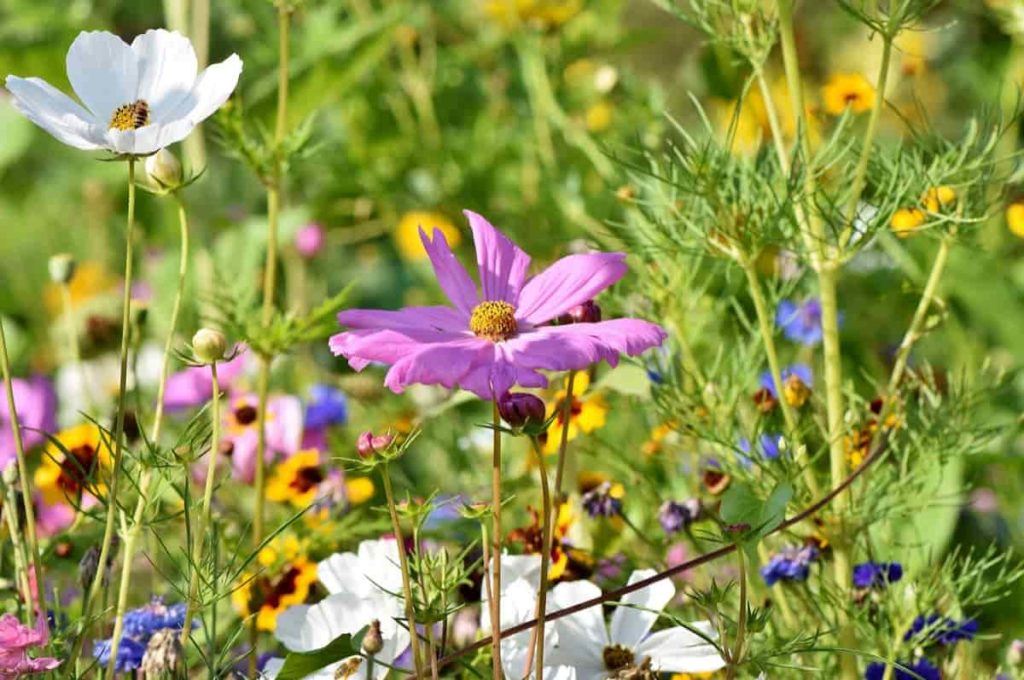
Fruit gardening in May
- Protect Strawberry plants from grass (to control weeds and lift berries from the ground) and lairy (to keep birds away from fruit).
- Hang Pheromone nets in Apple trees to reduce the codling moth.
- Water small fruit trees well while they are growing rapidly.
- Remove flowers and fruits from newly planted fruit trees to help them establish themselves properly during their first year.
- Check the Gooseberry bush center regularly for green gooseberry Sawfly Caterpillars, if they are not removed, they will quickly skeletonize the leaves.
- Keep your fruit bushes and fruit trees well in water to ensure good fruit setting and fruit growth. Monitor soil humidity levels during dry spells.
- Pinch the tips to grow a shoot on your grapevine. To focus energy on fruit growth and ripening, stop them from two leaf joints beyond the developing fruit truss.
- Keep an eye on the Aphids and other insects and find ways to control them.
- Net soft fruit against birds. Remove after the fruit is finished at the end of summer.
- Weed Strawberry beds and around fruit trees and shrubs.
- Tie in new growth on trained Apples and Pears.
- Harvest Gooseberry and Early Strawberries.
In case if you miss this: Gardening Tips for February, Ideas, and Techniques
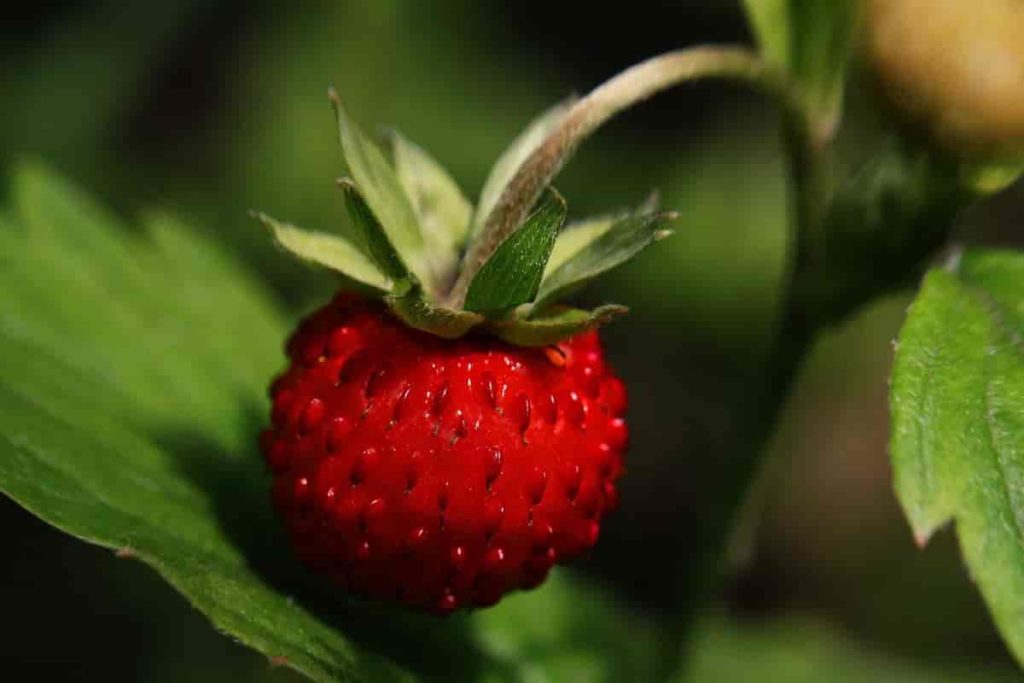
Herbs gardening in May
- May is the best time to sow almost any herb you might think of. Now it’s hot enough for plants to grow that require a little extra warmth, and it’s not too late to start that need some time to get set on the growing season.
- Warm-loving herbs like Basil, Rosemary, Sage, and Thyme and are best sown and transplanted indoors, but others such as Coriander, Dill, Parsley, Chives, and Spring onions can be sown directly in containers in or outside the ground. You can start taking softwood cuttings of shrub herbs like Sage and Lemon verbena and herbs like Mint and Lemon balm.
- If you haven’t done yet, trim lavender plants, remove all of last year’s flowering heads.
Vegetable gardening in May
- Harvest the Asparagus spears when they are not more than 18 centimeters tall.
- Thin the directly sown vegetables like Spinach, Carrot, and Lettuce seedlings, then water the rows well.
- Harden the outer Tomatoes, Courgettes, and Pumpkin saplings early next month.
- Protect Carrots from Carrot Fly by covering them with gardening horticultural fleece.
- Remove the final points of the Broad Beans as the Beans start coming on the plant’s base to reduce the risk of a Blackfly attack.
- Weed around your Onions and Garlic to reduce the nutrient and water competition. Apply onion manure to boost growth.
- Support pea plants with a twiggy stick or pea netting.
- Remove weeds, weeds will compete with your vegetables for water, light, and nutrients.
- Place the potato stem on the ground and the soil moist.
- Support Leggy Peas with netting.
- Plant any first sowing of Brassicas and place greenhouse crops like Cucumber, Tomato, Chilli, and eggplant in their last places.
In case if you miss this: Gardening Tips for March, Ideas, and Techniques
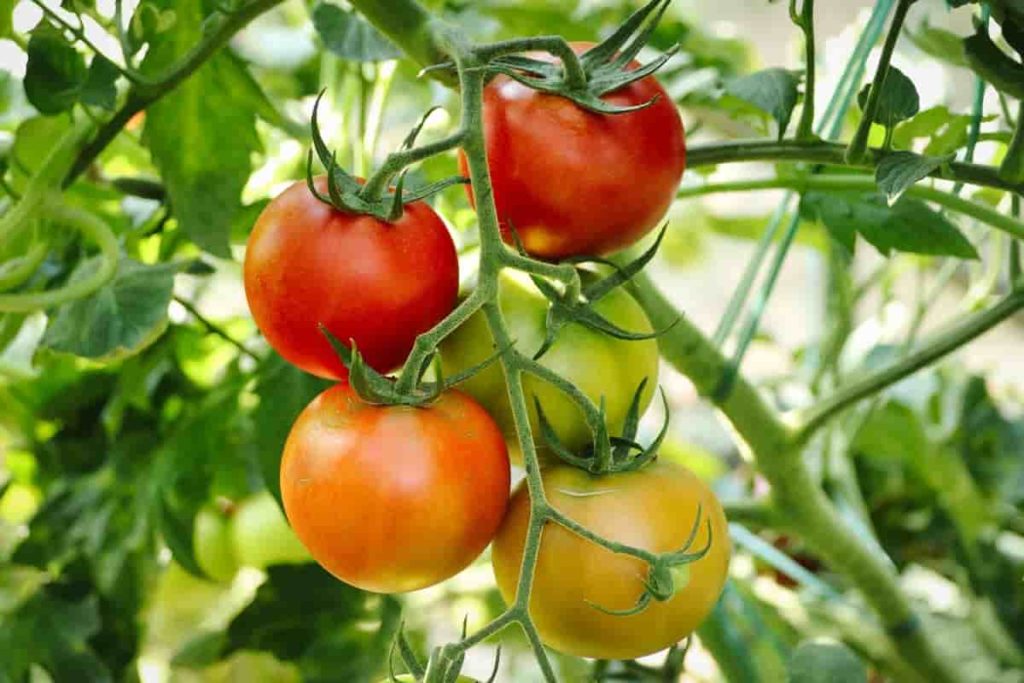
Bushes of trees
- This time of year, is nest season so always check the signs of activity before getting out the Pruners.
- Small bushes are less likely to hide nests, but be especially careful if we have to deal with dense or mature shrubs and trees. Just start working once you’re happy you won’t bother wildlife and if you have any doubts birds will stop immediately if they’re nesting. If needed, you can complete the work after August when nesting season should end.
- After the risk of frost is passed, cut down the Tender shrubs and sub-shrubs such as Penstemon, Caryopteris, and Fuchsia.
- After flowering, prune spring-flowering bushes such as Japonica, Choisya, and Ribes. In Kerria and Spiraea, remove one of three stems from the, and shorten the other floral trunks to a proper side shoot. Evergreens like Viburnum Tinus may also be carved this month.
- It’s a good time for the Coppice or Pollard Eucalyptus at the end of spring.
- Prune the loss of frost from the affected evergreen bushes.
- The young Mimosa tree can also be cut back now. Mature trees respond not as much of well to pruning.
- Prune the wall-trained pyracanthas, remove any shoots that come out of the wall, and reduce other new growth to about 8 centimeters. This encourages the growth of the formation and increases in flowers as compared to green growth.
- Twin climbers need to be regularly tied and twining around their support.
- Check the rose for black spots, Aphids, and leaf rolling Sawfly damage symptoms.
- Inspect the box and holly trees that look sick for signs of blight.
- Phytophthora root rot can cause dieback on mature trees and shrubs too. The wet winter season followed by hot spring and summer can encourage the problem of sensitive wood plants.
- Monitor damage or pests on the deciduous trees.
Houseplants care in May
- Change the place of Cymbidium, Ficus, and Citrus outdoors during on warm days but bring back in if cold nights are expected.
- Clean spiky plants with a soft brush and shiny leaved plants with a cloth.
- Make household plants pot showing signs of root binding or top-dress containers with fresh manure on top.
- Cool conditions and regular watering will help the pot-containing interior stool look good for longer. Remember the water logging in the rain but with rainwater, not tap water.
In case if you miss this: Gardening Tips for April, Ideas, and Techniques
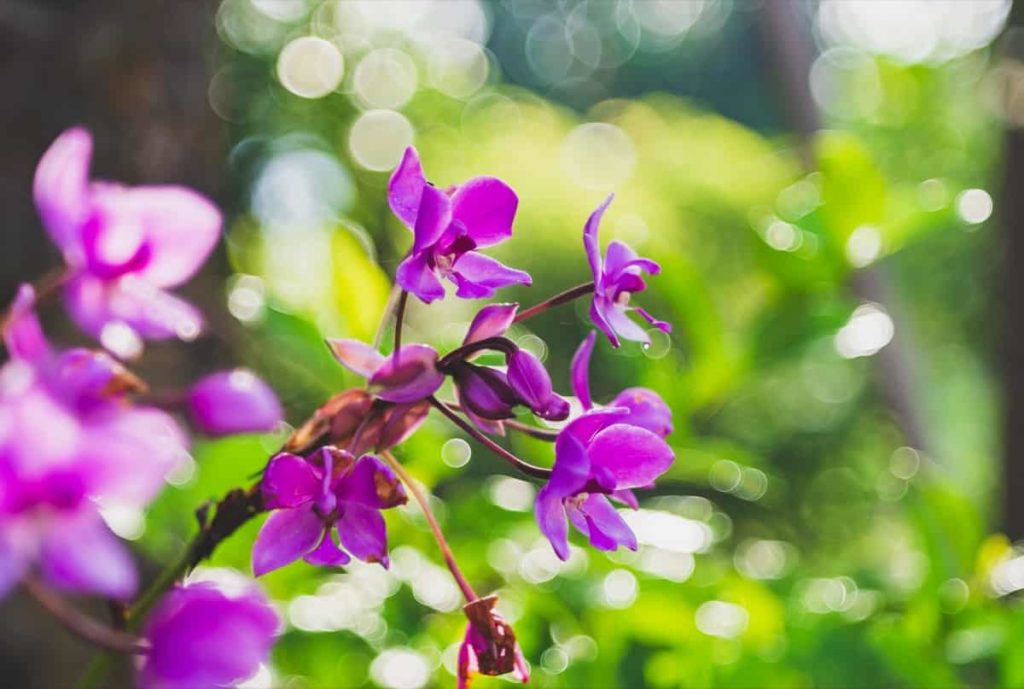
Greenhouse care in May
- Open and remove doors at greenhouses to increase ventilation on hot, sunny days.
- Regular damp on greenhouse floors on hot days, to increase moisture levels. This benefits plant growth and also reduces the risk of pest problems like glasshouse red spider mites.
- Don’t overlook giving too much space to greenhouse plants as they make new growth. This will help in avoiding disease and monitoring the initial attack of insects.
- Harden half your hardy bed plants that were started early under the cover. By keeping them out only for a short period of time, at the hottest time of the day, and then slowly increasing the length of time they are out, you can avoid the shock they experience when they are otherwise suddenly and permanently moved out.
- At least every few days monitor plants, to see if they need water. Seedlings will need daily attention. You can Practice rain, grey, or recycled water wherever possible.
- Hydrangeas and Fuchsias can be propagated with softwood stem tip cutting.
- Pots on any Begonia, Gloxinia, and Achimenes plants that you started in small pots before, but which are now large enough to repot in the next size.
- Tie indoor Tomatoes, Cucumbers, and Eggplant stem to the can as soon as they grow.
- Regularly check plants for insects, shoot tips and under leaves, and treat with biological control.
- Place shade and reduce the scorching to lower the temperature during the day.
- Open doors and vents on hot days, but close them in the evening as nights can still be cold.
- Keep cutting as soon as the seedlings get their first true leaves, to avoid overcrowding and fungal diseases.
- Repot any houseplants that have become heavy or pot bound on top tied in large containers.
- Take cuttings from Fuchsias, Dahlias, and Pelargoniums.
- Transplant Tomatoes into growing bags or large pots, and tie their central stem with a stick or vertical wire to help.
In case if you miss this: How to Make Flowers Bloom Fast, More, Tips, Ideas and Techniques
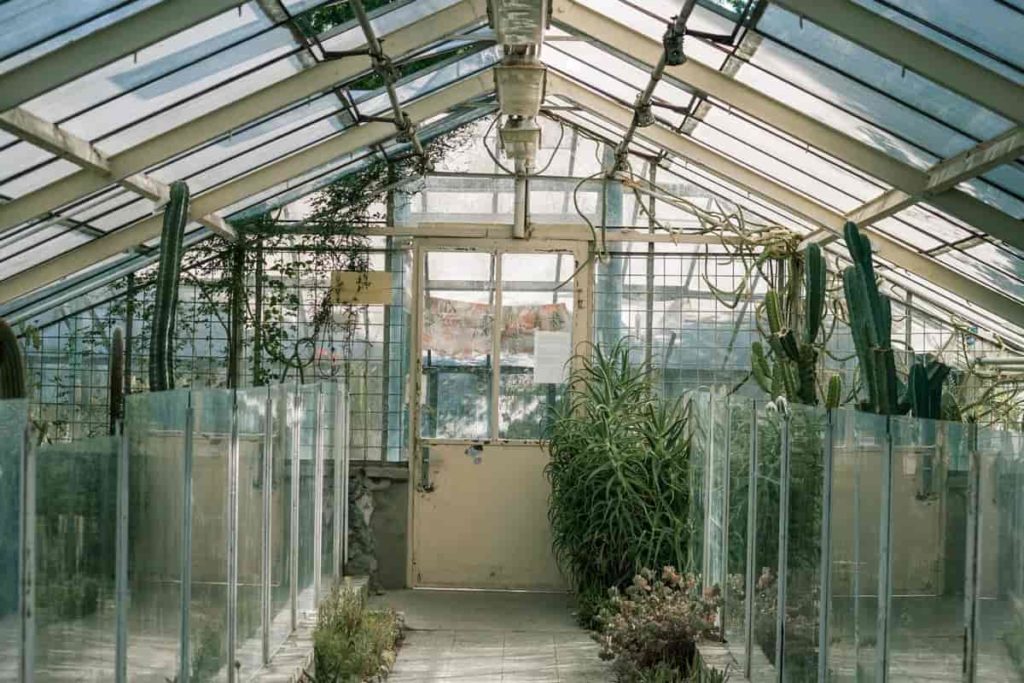
General plant care in May
- Take out Pondweed, Blanket Weed, and Algae with the properties of ponds and water.
- Apply wood treatment to make wooden garden furniture condition for summer.
- Set up an extra compost bin or insect bin, so you can recycle more green waste from your kitchen and garden.
- Apply nitrogen-rich summer lawn feed to boost leafy growth.
- Cut through the grass yams through the wildflower areas so you can walk between the flowers.
- Regular Trim topiary to boost bushy growth and make it look clean
- Sow grass seeds or lay a new turf by the end of this month, to build a new lawn or repair a damaged patch.
- Check the bushes for nests to avoid nest-disrupting birds.
- Clean and scrub bird feeders regularly to maintain hygiene.
- Make sturdy wigwams and support for climbers like Runner Beans, Sweet peas, and morning glory.
- Keep an eye on the Aphids on shoot tips and young leaves, and clean them or spray with soap-based solutions.
- Place the herbs on top to prevent them from getting out of hand.
- Keep birdbaths and drinkers clean and topped.
- Hang fly nets in greenhouses.
- Top dress pot with manure.
- Remove the excess herbs from the ponds.
- Take precautions especially against late-night frost, place garden fleece on emerging crops like Potatoes, cover cool frames with Polythene or Sacking, and cover young plants in the greenhouse with newspaper.
- Prevent weed seedlings from being established once a week by hoeing borders.
- Remember, if you are planning to stay away this month, arrange for any plant delivery and ask a neighbour for water pots and containers. Alternatively, set up an automatic water kit.
- Keep any disease under control with proper bug and pest prevention.
- Vine Weevil causes a lot of problems in pot plants. Use mixed biological nematode in a solution, and water plants when larvae are active.
- To control slugs and snails, try trapping them. Non-chemical nets like slug collar and nematode slug killer are available, only rarely use slug pellets.
- How to Grow Hibiscus from Flower
- Plantation Ideas for Home Decoration: A Beginners Guide
- Flower Garden Designs and Layouts for Beginners
- Planting and Spacing Techniques in Papaya: A Beginner’s Guide
- Growing Gold: Essential Techniques for Planting Pineapples
- How to Make Kalanchoe Plant Bushy: Home Remedies and Solutions
- 11 Reasons Why Your Gardenia is Not Blooming: Home Remedies and Solutions
- Eco Elegance: The Guide to Designing a Drought-Tolerant Landscape
- Gardening on a Slope: Strategies for Hillside Landscaping
- Nourish and Flourish: Top Organic Mulches for Thriving House Plants
- Everything You Want to Know about Indian Mogra Flower: Discover Uses and Growing
- Green Thumb Success: Expert Tips for Cultivating Greenhouse Pumpkins All Year Round
- Maximize Growth & Flavor: The Ultimate Guide to Companion Planting in Herb Gardens
- How to Control Rhododendron Problems Naturally: Home Remedies and Organic Ways to Fix Them
- Natural Magic: The Remarkable Benefits of Cinnamon for Plants
- Best Steps to Revive Dying Tulip with Natural and Organic Treatment
- 10 Reasons Why Your Angel Trumpet is Not Blooming: Remedies and Treatment
- How to Fix Periwinkle Leaf and Flower-Related Problems: Natural Remedies and Solutions
- How to Fix Zinnias Leaf and Flower Problems: Discover Natural and Home Remedies
- Organic Steps to Induce Lemon Tree Flowers: A Comprehensive Guide
- Bloom Booster: Crafting the Perfect Homemade Bougainvillea Fertilizer
- Optimizing Growth: A Guide to Applying NPK Fertilizer for Potted Plants
- 10 Best Homemade Fertilizers for Rubber Plant: DIY Recipes and Application Method
- How to Boost Female Pumpkin Flowers: Effective Steps for More Flowers and High Yields
- Transform Your Indoor Garden: Top Benefits of Pink Salt for Houseplants
- 10 Best Homemade Fertilizers for Peacock Plants (Calathea): Easy DIY Guide
- Unlock Blooms: 9 Reasons Why Your Potted Chrysanthemum is Not Blooming
- 8 Reasons Why Your Potted Hibiscus is Not Blooming: Fix it with Simple Solutions
- Unlock Blooms: 9 Key Reasons Your Potted Frangipani Won’t Flower
- 10 Reasons Why Is My Ice Plant Not Blooming: Remedies and Treatment
- 10 Reasons Why My Potted Hydrangea Not Blooming: Treatment and Remedies
- 10 Reasons Why is My Wisteria Not Blooming: Remedies and Treatment
- 10 Reasons Why is My Goldfish Plant Not Blooming: Remedies and Treatment
- Maximize Your Space: Ultimate Guide to Balcony Gardening with Grow Bags
- 10 Reasons Why Your Iris is Not Blooming: Remedies and Treatment
- 10 Reasons Why Your Anthurium Plant is Not Blooming: Treatment and Remedies